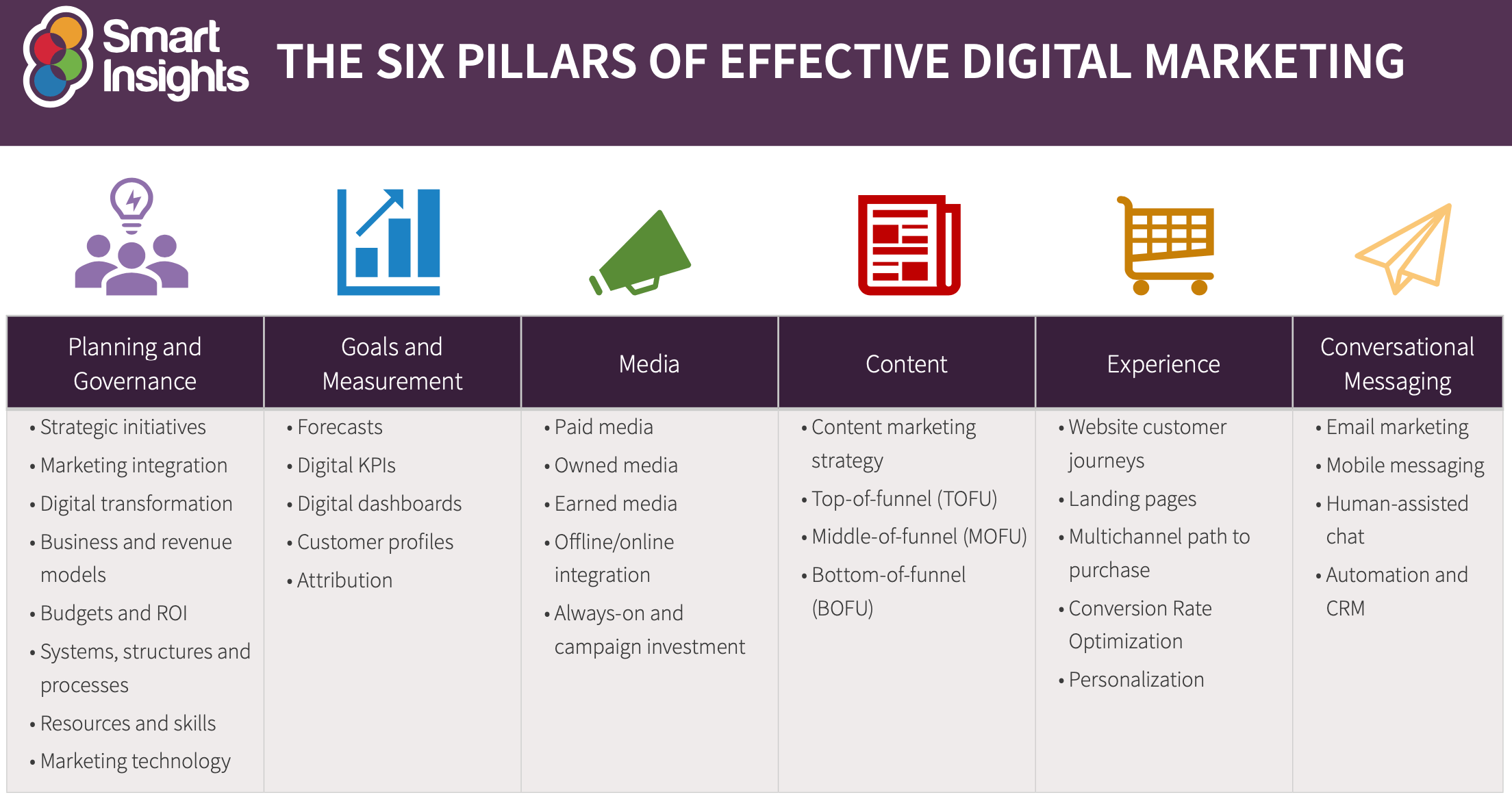Introducing the Mastery of The Ad Firm: Your Portal to Exceptional Solutions
Enhance User Experience and Drive Traffic With Receptive Website Design
In today's electronic landscape, where users are accessing sites from a wide range of gadgets, receptive website design has ended up being much more essential than ever. With its capability to adjust and flawlessly adapt to various display dimensions, responsive layout not just boosts individual experience yet additionally drives website traffic to your web site. However why is this design method so important? Just how does it boost user engagement and rise web site traffic? In this conversation, we will discover the vital aspects of effective receptive style, look into the very best practices for its execution, and discover the secrets to boosting individual experience while driving more traffic to your internet site.
Why Responsive Website Design Issues
Receptive website design is an essential element of contemporary internet development because of its capability to ensure ideal customer experience across different devices and display dimensions. With the proliferation of mobile phones, tablet computers, and other smart phones, it has ended up being essential for web sites to adjust and offer smooth performance despite the gadget being made use of.
The key reason that responsive internet layout matters is that it allows individuals to have a consistent and satisfying browsing experience, no matter the tool they are using. A responsive web site immediately readjusts its material, layout, and format components to fit the display dimension and resolution of the device, making sure that customers can conveniently connect and browse with the web site without any kind of aggravation or disappointment.
Additionally, responsive web design also plays a significant role in search engine optimization (SEARCH ENGINE OPTIMIZATION) Online search engine, such as Google, focus on websites that are responsive and mobile-friendly in their search engine result. By incorporating receptive style principles, websites can improve their presence and position, causing boosted organic traffic and potential customers.

Boosting Individual Engagement With Responsive Layout
Maximizing user engagement is an essential objective of responsive layout, as it ensures that users can easily gain access to and engage with internet site material on any kind of tool. With the increasing use smartphones and tablets, it is essential for sites to adapt to different screen sizes and resolutions. Responsive style makes it possible for websites to instantly readjust their format and web content to give a smooth user experience across gadgets.
Among the main ways responsive design improves individual engagement is by minimizing tons times. With a responsive site, users don't need to wait on separate mobile variations to tons, leading to faster accessibility to web content. This enhanced speed leads to higher customer complete satisfaction and encourages them to invest more time on the site.
In addition, responsive design enhances customer interaction by improving navigating and individual interface (Web Design). When an internet site is created responsively, menus and switches are enhanced for touch interactions, making it easier for customers to engage and navigate with the site on their smart phones. This straightforward and user-friendly experience maintains individuals involved and motivates them to discover more of the website
In addition, responsive style permits better web content visibility and readability. By adapting the format and font style sizes to various gadgets, receptive websites make certain that users can quickly understand the material and read. This enhances customer engagement by minimizing the demand for zooming or scrolling to read the message.
Increasing Site Web Traffic With Responsive Website Design
With the growing popularity of mobile phones, having an internet site that is receptive to various display dimensions and resolutions is vital for driving enhanced website traffic. In today's digital landscape, individuals are accessing web sites from a selection of tools such as smartphones, tablets, and computer. Each of these tools has various screen sizes and resolutions, and if your internet site is not created to adapt to these variations, it can lead to an inadequate individual experience and a loss of prospective traffic.
Responsive internet style ensures that your internet site looks and operates efficiently across all devices. By utilizing adaptable grids, fluid photos, and media queries, receptive layout allows your internet site to immediately change its content, format, and navigating to fit any kind of display size. This suggests that individuals will certainly have a seamless surfing experience regardless of whether they are using a tiny smartphone or a huge desktop computer.
Crucial Element of Effective Responsive Layout
Reliable responsive style incorporates a number of crucial elements that guarantee a smooth user experience throughout various gadgets. Among these elements is versatile grids and formats. By utilizing family member devices like percentages rather of fixed systems like pixels, developers can produce formats that scale and adjust to fit various screen sizes. This permits web content to be shown in a aesthetically appealing and understandable way on any kind of gadget.
Another essential aspect is media questions. These permit developers to use various styles and designs based upon the features of the customer's device, such as screen dimension and alignment. By utilizing media inquiries, designers can enhance the helpful site presentation of content for each device, making sure that it is readable and conveniently obtainable.
Receptive photos are likewise crucial in effective responsive layout. Photos that are as well big can reduce page load times on mobile phones, while photos that are also little may appear pixelated on bigger displays. By utilizing methods such as responsive image resizing and careless loading, designers can guarantee that images are properly sized and enhanced for each tool.
Last but not least, efficient responsive style entails a mobile-first strategy. This indicates focusing on and developing web content for mobile phones first, and afterwards boosting the design and increasing for bigger screens. This approach makes certain that one of the most essential web content is quickly accessible on smaller sized screens, while still giving a rich experience on bigger gadgets.
Ideal Practices for Carrying Out Responsive Internet Design
Executing responsive website design needs careful factor to consider of different ideal practices to make certain an optimal customer experience across various devices. Below are some key finest techniques to comply with when applying responsive website design.
Firstly, it is critical to prioritize mobile individuals. With the raising dominance of mobile gadgets, making for mobile-first has ended up being crucial. Start by creating for smaller sized displays and afterwards considerably enhance the layout for larger displays.

An additional essential ideal method is to optimize photos for different display resolutions. Large pictures can reduce down the packing time of your internet site, particularly on mobile phones with slower connections. Use receptive images that can be resized based on the tool's screen resolution to boost efficiency.
In addition, test your web site on various devices and display dimensions to guarantee a smooth and regular experience. There are various screening devices available that can assist you determine any problems and make essential adjustments.
Finally, focus on use and ease of access. Make sure that your site is very easy to browse, with concise and clear material. Make certain that your site comes to individuals with impairments and adheres to accessibility standards.
Conclusion
Finally, receptive website i thought about this design plays an essential duty in improving customer experience and driving traffic to websites. By adopting responsive design principles, sites can make sure ideal checking out experiences across different devices, resulting in enhanced user engagement (seo Carlsbad). Responsive design can also add to greater site web traffic as it boosts search engine rankings and facilitates easy sharing of content. Organizations must focus on carrying out the essential aspects and best techniques of responsive layout to efficiently fulfill the demands of modern-day individuals.
Maximizing user interaction is a key goal of receptive design, as it makes sure that users can quickly accessibility and interact with site web content on any kind of gadget. Receptive design enables web sites to instantly adjust their layout and material to give a smooth user experience across tools.
In addition, receptive design enhances individual interaction by enhancing navigating and customer interface.Responsive images are also important in reliable receptive layout. By adopting responsive style concepts, web sites can make certain optimum viewing experiences throughout various devices, leading to increased More Info user engagement.